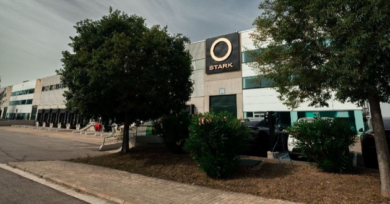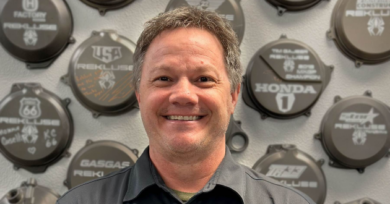Feb. 9, 2009 – An aftermarket dynamic worth watching
There is a tug of war occurring in the parts and accessories world that is not so much new as it is compelling. For at some point, is it not hard to imagine this contest swaying in a new direction.
The tug of war is between aftermarket manufacturers and new vehicle OEMs as they vie for pieces of the parts, garments and accessories pie. By all indications, OEMs are holding firm, if not gaining, in this ongoing contest.
A look at financial reports from three U.S.-based vehicle manufacturers, Harley-Davidson, Polaris and Arctic Cat, show those gains. Each of those manufacturers is making significantly more revenue from their parts, garments and accessory sales than they did five years ago.
That might not be surprising, but it is surely of marked importance. Why? Because PG&A revenue should get even more attention in the near future as in each of those OEMs it now represents a larger portion of the bottom line. Take Polaris Industries, for example. Polaris’ third-quarter report in 2008 showed PG&A to account for 18 percent of its total revenue, which is three percentage points higher than five years ago. The growth, in terms of PG&A relevance to the bottom line, is even more pronounced at Arctic Cat — 18 percent in the company’s fiscal 2008 first half compared to 12 percent five years ago.
So because Polaris, Arctic Cat and Harley-Davidson are making more on PG&A than five years ago — you can throw in Ducati for good measure — does that mean they have gained in the tug of war vs. smaller aftermarket manufacturers? Not necessarily.
There is precious little data available on the aftermarket and what is available is outdated. However, what is available shows the overall aftermarket pie growing at a healthy rate. Motorcycle Industry Council retail outlet surveys show total PG&A sales to be around $3.7 billion in 2006. Compared to the turn of the decade, that total has grown by some 19 percent.
So because the aftermarket pie as a whole has swelled, it isn’t all that surprising to see the OEMs’ parts and accessories revenue increasing. Nor can it be said that because OEMs are making more that in turn is a bad thing for the smaller aftermarket companies, or that the
latter group has seemingly lost ground in the PG&A tug of war. Many aftermarket companies do a considerable amount of manufacturing for OEMs and have grown in size and stature as a result of these relationships.
On the other hand, aftermarket sources tell us that such work often leads to squeezed profit margins for these companies to say nothing of the resulting competitive pressures placed on their own branded — and more profitable — goods.
This snapshot of the aftermarket industry, however, is not aimed at determining a value on these types of relationships. We leave that to the respective leaders of the aftermarket companies.
What it’s intended to do is portray the tug of war and the direction it could go, a subject that is of infinite interest as the prime aftermarket selling season arrives.
It’s a subject that becomes that much more compelling in a time when consumer spending has tightened to fingernail-biting levels. If this pattern holds, then it’s possible this aftermarket tug of war will be affected by a complex question: What will win the fewer available consumer dollars, brand loyalty or a perceived value with lower-cost items?
Generally speaking, those in the aftermarket believe their privately labeled items have lower prices than the OEM-branded goods, which are sometimes higher in price simply because there is a third party involved in the retail process. (The three parties being the manufacturer, OEM and dealer to say nothing of the distributor.)
As well, many aftermarket officials concede that many consumers will look immediately to the Honda-branded windshield or other OEM-labeled item simply because of their knowledge and loyalty to the brand.
So who wins out in this brand vs. lower cost contest? It’s hard to say as evidence can be found in both camps.
Marketing experts insist many high-end retail brand names fare better in down economies because consumers do less impulse buying and what money they spend goes to familiar, trustworthy brand names.
On the other hand, the recent holiday shopping season showed consumers being heavily swayed by low prices. A poll of more than 8,000 consumers showed coupons were a much bigger factor this year in determining where to shop compared to a year ago, according to the National Retail Federation.
Yet common sense says the mood of the holiday-time shopper is so different than the rest of the year that it’s hard not to see brand loyalty winning out in time.
All of which means there could be some ground gained, and lost, in this compelling aftermarket tug of war.
See you at Indy
Stop by Powersports Business’ Indy Expo booth, No. 1613, to say hello. psb
Neil Pascale is editor-in-chief of Powersports Business. He can be reached at npascale@affinitygroup.com.




